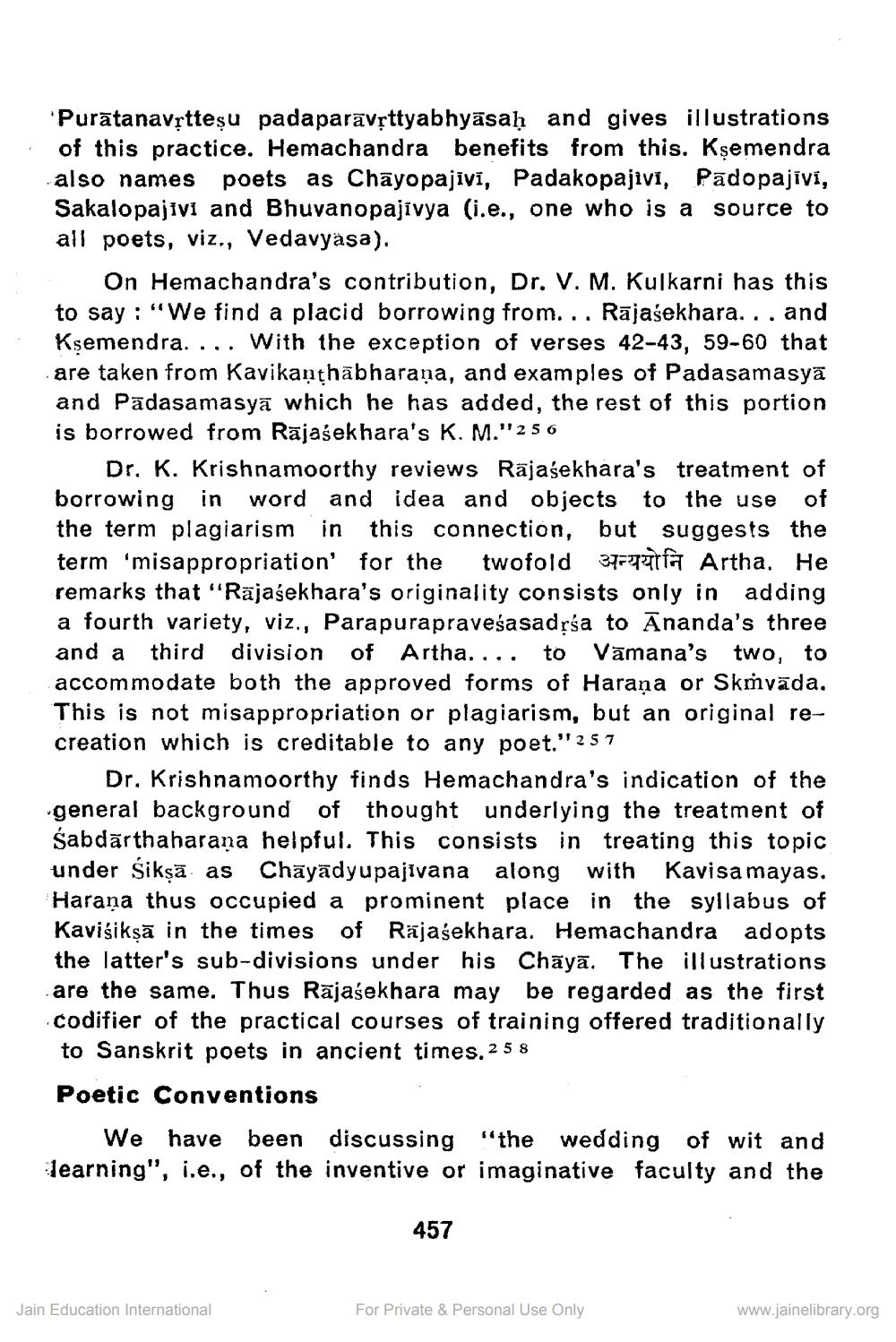________________
Purātanavrtteşu padaparāvșttyabhyāsaḥ and gives illustrations of this practice. Hemachandra benefits from this. kşemendra also names poets as Chāyopajivi, Padakopajivi, Pädopajivi, Sakalopajivi and Bhuvanopajívya (i.e., one who is a source to all poets, viz., Vedavyasa).
On Hemachandra's contribution, Dr. V. M. Kulkarni has this to say: "We find a placid borrowing from... Rājasekhara... and kşemendra. ... With the exception of verses 42-43, 59-60 that are taken from Kavikanthabharaṇa, and examples of Padasamasyā and Pādasamasyā which he has added, the rest of this portion is borrowed from Rājasekhara's K. M."256
Dr. K. Krishnamoorthy reviews Rājasekhara's treatment of borrowing in word and idea and objects to the use of the term plagiarism in this connection, but suggests the term 'misappropriation' for the twofold 37779cfa Artha. He remarks that "Rājasekhara's originality consists only in adding a fourth variety, viz., Parapurapraveśasadrsa to Ananda's three and a third division of Artha.... to Vāmana's two, to accommodate both the approved forms of Harana or Skrvāda, This is not misappropriation or plagiarism, but an original recreation which is creditable to any poet." 257
Dr. Krishnamoorthy finds Hemachandra's indication of the general background of thought underlying the treatment of sabdārthaharana helpful. This consists in treating this topic under siksā as Chāyādyupajivana along with Kavisamayas. Harana thus occupied a prominent place in the syllabus of Kaviśikṣā in the times of Rajasekhara. Hemachandra adopts the latter's sub-divisions under his Chāyā. The illustrations are the same. Thus Rājasekhara may be regarded as the first codifier of the practical courses of training offered traditionally to Sanskrit poets in ancient times. 2 5 8 Poetic Conventions
We have been discussing "the wedding of wit and learning", i.e., of the inventive or imaginative faculty and the
457
Jain Education International
For Private & Personal Use Only
www.jainelibrary.org




